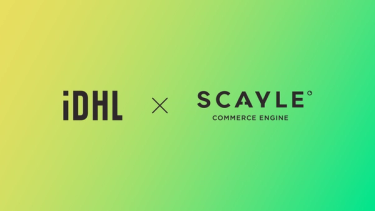Insight10 min read
Why change in your web project can be a good thing
Tue Feb 22 2022 | Marketing Team

- Insight
- Web & eCommerce
- Design, UX & UI
Tags
Website projects are large undertakings that often involve a number of stakeholders, external web experts and challenges to overcome.
By nature, new ideas will be uncovered along the way. When this happens, it has the potential to cause your project to gradually creep away from the initial scope. This can result in extended timescales and increased costs yet usually, there isn’t an endless budget or limitless time available which means tough decisions have to be made.
But what if we told you that change within your web project can be a good thing? When you consider change during the very first stages of your web project, it can be hugely beneficial to the final outcome and avoid difficult decisions to be made later.
Key takeaways
In this blog, we discuss:
- Why change in web projects has a bad reputation
- Why change in a web project commonly occurs
- At what stages of a web project change most often occurs
- How to make the most of change in your web project
The problem with change
Change control – also known as scope creep or change requests – have a negative reputation in web projects. But change isn’t all bad. In fact, it’s part and parcel of any project delivery and the way you prepare for change is what matters.
Let’s set the scene. The project process usually goes something like this:
1. A business decides they need a new website or support with a website project and seeks a web partner to work with. As part of this process, a business development manager will begin building a relationship with key stakeholders of the business to gather information.
2. Often, the business will have written a brief or need help writing a brief with the support of an experienced partner.
3. They then distill this insight into a brief which includes information on who the business is such as:
- Their values and what they stand for
- The challenges the business is experiencing
- Project objectives
- Budgets
- Timescales
4. This brief gets passed over to the account and project manager looking after the client and the project is underway.
But we do things a little differently. Typically, at key project milestones, additional features or functionality that you may want to include are uncovered. Without time or budget contingencies in place, these can create difficult conversations where the outcome usually involves:
- More money being spent
- A longer timescale
- The new functionality or feature set not being included
During these first conversations, we encourage you to think ahead and consider potential out-of-scope items so your expectations are realistic, and contingencies can be discussed. Doing so allows you to mitigate these new ideas and challenges in a way that best suits your business.
Why does change happen in a web project?
With many elements to consider, ideas to contemplate and stakeholders to satisfy, there are countless reasons why change could occur in a web project. With over 20 years of experience building websites, the most common situations you need to be aware of include:
A new stakeholder joining the business
When a new key stakeholder joins a business, they’ll likely bring new ideas. In some cases, a fresh pair of eyes is all that’s needed to reveal a bright idea that everyone wants to move forward with.
However, if this is something that hasn’t been previously considered, it can bring about new functionality or features that now need to be part of the project.
A business decides to rebrand
We often see businesses decide to rebrand alongside a website project. This will likely uncover new considerations and styling that need translating online, especially if the process begins partway through the project.
Business objectives change
Change requests may arise due to a change in business direction, or a new objective being introduced. When an objective is added part-way through the project it can disrupt the priorities that were initially defined and require extra time or budget to reach the new goal.
At what stages in a web project could change occur?
While change can occur at any stage of a web project, there are key milestones that often reveal new considerations. These include:
- Discovery: During the discovery phase of a project, a lot of research is completed. Exercises and workshops including competitor analysis, stakeholder interviews, persona workshops and user testing uncover extensive insight. This phase is an opportunity to dig deep into who your users are and understand what they want. However, with so much research, it’s common that new findings may not fully align with your original thoughts which could cause new ideas to emerge.
- Design: During the design phase, everything that has been discussed so far is being brought to life. Technical detail is being discussed, thought is being put into how the website will be built and features and functionalities are being considered in more detail. As part of this process, amends and feedback are inevitable.
- User Acceptance Testing (UAT): Finally, there’s the potential for even more change requests when you reach UAT stage. At this point, the site has become a physical asset. User elements that you have not yet considered are likely to surface at this stage as you get used to how the site works.
Out-of-scope items are expected within a web project. They simply show that there are always evolutions in the way a feature or functionality could work. We approach change with the mindset of encouraging our clients to consider out-of-scope items and contingencies during the initial project stages. This gives us the insight to provide low and high costing estimates and include contingency plans within the brief. As such, we’re prepared for change and can make the most of new opportunities.
Dealing with change in your web project
By putting contingencies in place and planning for change, you have the freedom to act on opportunities as you see fit. This can be done in a few ways:
1) Create a contingency plan
The best way to deal with change is by preparing for it in the first place. It’s better to have a contingency ready to implement than to have to develop one as the risk or change emerges.
Having a contingency plan in place means you can set allocated budget and time to one side, so you have the freedom of choice when it comes to making the change.
2) Phased project
A phased project approach allows you to work through your objectives across a number of phases. Key to this is prioritisation which involves understanding the value behind each objective, functionality or feature set and therefore which is the most important to implement first. If the new change isn’t seen as essential, you may decide not to spend your contingency on it and instead take a phased project approach to introduce the improvement at a later date.
In some cases, an MVP (Minimum Viable Product) might be best suited to your project. The MVP is the simplest form your website can launch in to still achieve your core objectives. This maximises customer value yet ensures budgets and timeframes don’t slide.
3) Iterative improvements
An approach we see great success with is iterative improvements. This involves making continuous improvements to your website to ensure you get greater value from your investment. There are many reasons why continuous improvement could work for your business:
- Keep up with changing needs: As your business evolves so do the needs of your audience and, as such, your goals. Your website needs to evolve in line with these considerations so it can continue to support your business.
- Maximise your investment: With this approach, you can get the maximum lifespan from your website before a redesign or rebuild is required. This allows you to reduce your total cost of ownership and make the most of your budget too.
- Ensure optimum performance: Reviewing your website continuously allows you to regularly check for faults to ensure optimum performance. This means your business won’t be let down by poor performance such as slow loading speeds and site stability issues.
One way to carry out iterative improvements is through a retainer. A retainer plan allows you to work with your agency to prioritise improvements. Whether that’s UX changes, new features and functionality, fixes or upgrades, it helps you to consistently stay on top of your website.
An approach that works extremely well for many of our clients, we support the likes of Ryobi, London Chamber of Commerce and Industry, Institute of Structural Engineers and Peabody through dedicated retainer plans.
Get prepared for change
Your website is a living, breathing business asset and should be treated as one. Having a certain level of flexibility and being open to change occurring for the greater good of the project can be hugely beneficial to success. The consequential effect of unmanaged change has the potential to be far more damaging to your web project.
Launching your website is just the start of our partnership with your business. We’re dedicated and on-hand to help you maintain, evolve and improve your offering past go-live. For more information on our services and how we can help you get more from your website, get in touch to discuss your business needs with us today.


